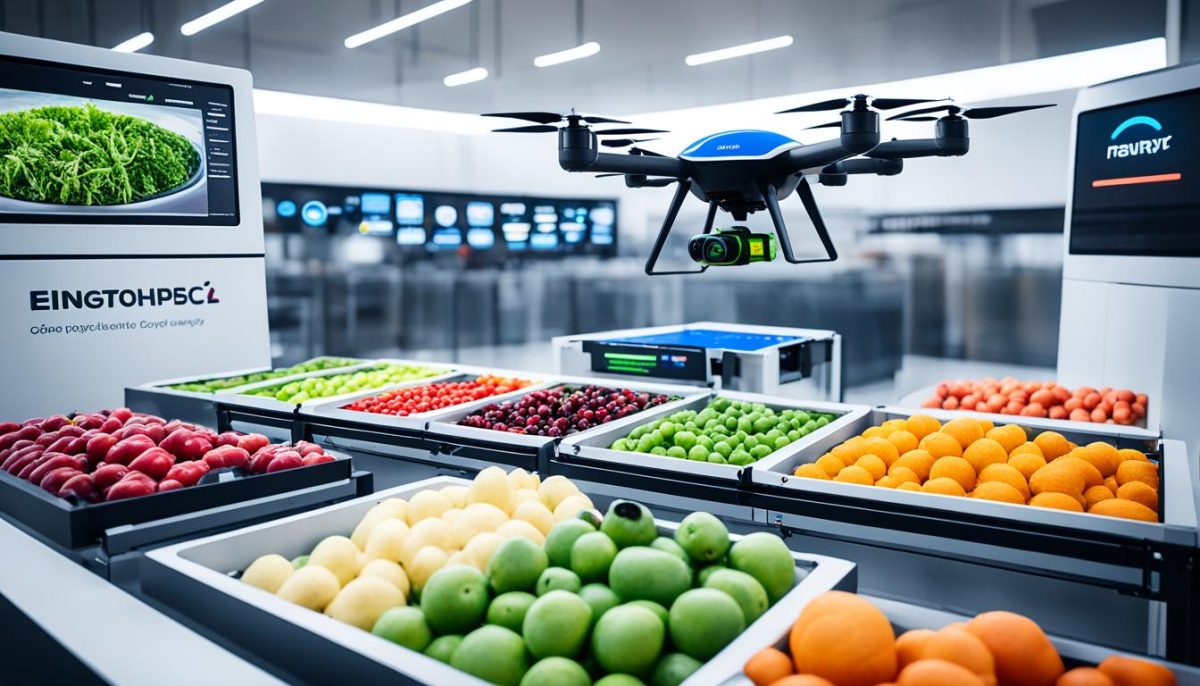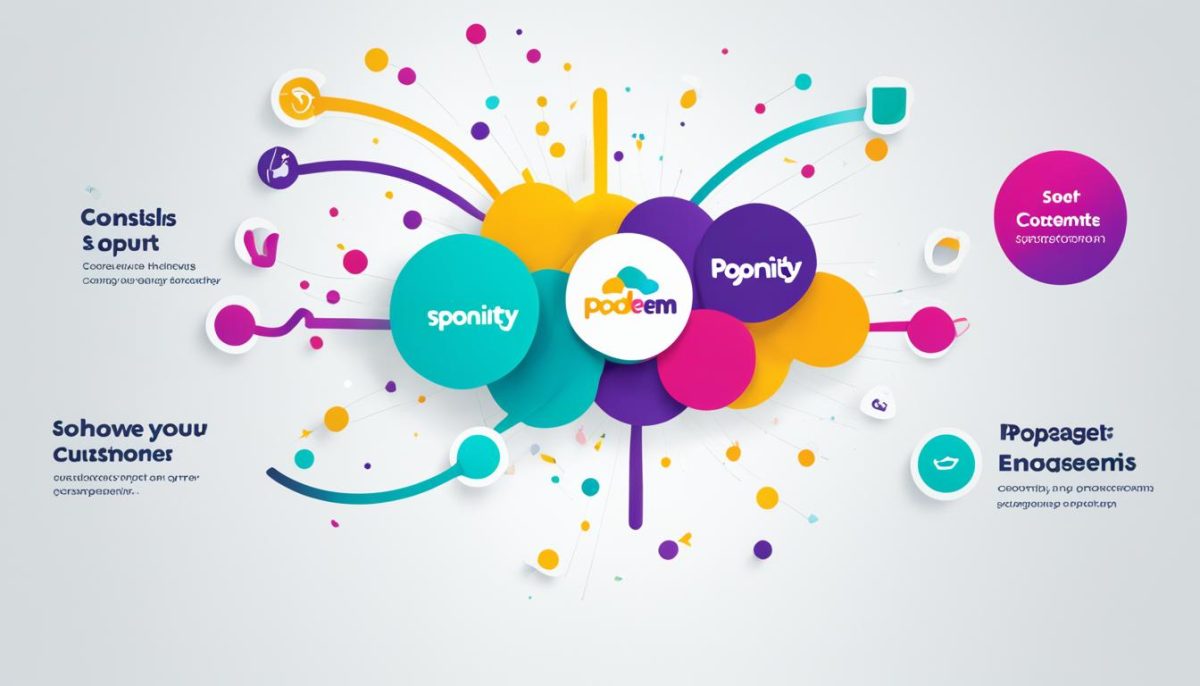Welcome to our exploration of the latest trends that are shaping the food marketing industry. In this section, we will delve into the innovative strategies and changing consumer behavior that are revolutionizing the way brands promote and sell their products.
Innovative Strategies in Food Marketing
As the food industry becomes more competitive, food marketers are adopting innovative strategies to stand out from the crowd and capture the attention of their target audience. These strategies not only help brands stay ahead in the market, but they also create unique and engaging experiences for customers. In this section, we will explore some of the innovative strategies that food marketers are using to connect with consumers and drive business growth.
The Power of Social Media Influencers
Social media has revolutionized the way brands market their products, and food marketing is no exception. In recent years, leveraging social media influencers has become one of the most effective ways for food marketers to reach their target audience. By partnering with influencers who have a strong following and a genuine love for food, brands can showcase their products in an authentic way and generate buzz among their target customers. Whether it’s through enticing food photographs, recipe collaborations, or honest reviews, social media influencers play a crucial role in building brand awareness and driving sales.
Personalized Marketing Campaigns
Gone are the days of generic marketing campaigns that reach a broad audience. Today, food marketers are embracing personalization to deliver tailored messages to their customers. Through the use of data analytics and customer insights, brands can create personalized marketing campaigns that cater to individual preferences and needs. From customized email newsletters and targeted social media advertisements to personalized product recommendations, these campaigns make customers feel valued and understood, leading to increased brand loyalty and repeat business.
Interactive Experiences
A key aspect of innovative food marketing strategies is creating interactive experiences that engage customers on a deeper level. Brands are now focusing on experiential marketing techniques such as pop-up events, chef collaborations, and interactive cooking demonstrations to create memorable experiences for their customers. These immersive experiences not only showcase the brand’s products but also allow customers to interact with the brand, fostering a stronger connection and creating a lasting impression.
User-Generated Content
User-generated content has become a powerful tool for food marketers to showcase their products and build trust among consumers. By encouraging customers to share their experiences with the brand or their own creations using the brand’s products, food marketers can leverage the authenticity and credibility of user-generated content. This content not only helps in building a community around the brand but also acts as social proof, influencing potential customers to try the products themselves.
Innovative strategies in food marketing are all about staying ahead of the curve and creating unique experiences for customers. By embracing the power of social media influencers, personalization, interactive experiences, and user-generated content, brands can effectively promote their products and build strong connections with their target audience. These strategies are shaping the future of food marketing and will continue to play a significant role in driving success in the industry.
The Impact of Consumer Behavior on Food Marketing
Consumer behavior plays a pivotal role in shaping the strategies and tactics employed by food marketers. As the preferences and expectations of consumers evolve, brands must adapt their marketing efforts to stay relevant and meet the demands of their target audience.
One significant trend that has emerged in recent years is the growing demand for sustainable and ethically sourced food products. Consumers are increasingly conscious of the environmental impact and ethical considerations associated with the food they consume. This has led to a rise in demand for organic, locally sourced, and fair-trade products.
Brands that align themselves with these values and promote sustainable practices are more likely to resonate with environmentally conscious consumers. They can differentiate themselves from competitors and build a loyal customer base.
Another key factor influencing consumer behavior in food marketing is the rise of health-conscious consumers. With an increased focus on personal well-being, individuals are actively seeking healthier food options. This has led to a surge in the demand for plant-based, organic, and clean-label products.
Food marketers have embraced this shift in consumer behavior by creating targeted marketing campaigns that emphasize the health benefits of their products. They leverage influencers, social media platforms, and content marketing to reach health-conscious consumers and communicate the nutritional value of their offerings.
Brands that are transparent about their ingredients, nutritional information, and manufacturing processes can establish trust with consumers in this health-conscious market. By effectively addressing consumer concerns and providing valuable information, they can position themselves as reliable sources of healthy food choices.
The Power of Personalization
Personalization is another crucial aspect of food marketing that is strongly influenced by consumer behavior. Brands are leveraging data and technology to create personalized experiences and targeted marketing messages.
By analyzing consumer data, brands can gain insights into individual preferences and purchase patterns. This information allows them to tailor marketing campaigns and product recommendations to specific consumers, increasing the likelihood of conversion and repeat purchases.
For example, grocery delivery services can utilize consumer data to curate personalized shopping lists and offer targeted promotions based on past purchases or dietary restrictions. Similarly, restaurants can create personalized menus or offer customized meal options to cater to individual tastes and dietary preferences.
Building Authentic Connections
“Consumers today want to connect with brands on a deeper level. They expect brands to understand their needs and values, and to reflect that in their marketing efforts.”
– John Smith, Chief Marketing Officer at FoodBrand
Authenticity has become a critical factor in consumer decision-making. Consumers seek brands that align with their values and demonstrate transparency in their marketing messaging. This has driven the rise of influencer marketing and user-generated content, as consumers trust the recommendations and experiences of their peers more than traditional advertising.
Food marketers are collaborating with influencers who share their target audience’s values and interests, enabling them to reach a wider customer base and build authentic connections. They also encourage user-generated content, such as product reviews, recipes, and social media posts, to foster a sense of community and engagement.
| Consumer Behavior | Key Takeaways for Food Marketers |
|---|---|
| Growing demand for sustainable and ethically sourced products | Align with sustainability goals, promote transparent sourcing practices |
| Rise of health-conscious consumers | Emphasize nutritional value, highlight health benefits in marketing |
| Preference for personalized experiences | Utilize consumer data to tailor marketing messages and product recommendations |
| Importance of authenticity | Collaborate with influencers, encourage user-generated content to build trust and connection |
Understanding consumer behavior is crucial for food marketers to create effective marketing strategies and connect with their target audience. By staying attuned to evolving consumer preferences, brands can adapt their marketing efforts, build authentic connections, and drive customer loyalty in the competitive food industry.
Technology and Automation in Food Marketing
As technology continues to advance at a rapid pace, its impact on various industries, including food marketing, is undeniable. Brands are now leveraging innovative technologies and automation to streamline their marketing processes, deliver personalized messages, and effectively engage with their target audiences.
One of the key ways technology is transforming food marketing is through AI-driven personalized recommendations. By analyzing customer data and preferences, brands can provide tailored product suggestions that cater to individual tastes and preferences. This not only enhances the customer experience but also boosts sales and customer loyalty.
Automation is another significant aspect of technology in food marketing. Brands are now automating various marketing campaigns like email marketing, social media advertising, and content distribution. Automated processes not only save time and resources but also ensure that brands can deliver targeted messages to their audiences at the right time, increasing the chances of conversion.

Take, for example, the use of automation in email marketing. Brands can now automate email campaigns based on customer behavior, such as sending personalized recommendations based on previous purchases or cart abandonments. This level of automation not only improves the efficiency of marketing efforts but also creates a more personalized and seamless experience for customers.
Furthermore, technology and automation enable brands to gather and analyze vast amounts of data, providing valuable insights into consumer behavior and market trends. With access to real-time data, brands can make data-driven decisions, optimize their marketing strategies, and gain a competitive edge in the market.
In summary, technology and automation have revolutionized the food marketing landscape. Brands that embrace innovative strategies, such as AI-driven recommendations and automated campaigns, can unlock new levels of success in engaging with their target audiences. By leveraging technology and automation, food marketers can effectively deliver personalized messages and stay ahead in an increasingly competitive industry.
The Future of Food Marketing
In this final section, we will explore the future of food marketing and the trends that are expected to shape the industry in the coming years. From the rise of virtual reality experiences to the integration of voice search technologies, we will discuss the exciting possibilities that lie ahead for food marketers.
As technology continues to advance at a rapid pace, the future of food marketing holds immense potential for brands to connect with their target audience in innovative ways. Virtual reality (VR) experiences are predicted to become increasingly popular, allowing consumers to immerse themselves in interactive and engaging virtual realms. This presents a unique opportunity for food brands to create virtual taste experiences, where consumers can virtually try out different flavors and textures before making a purchase decision.
Another trend that is set to revolutionize the food marketing landscape is the integration of voice search technologies. With the growing popularity of voice-activated devices like smart speakers and virtual assistants, consumers can now effortlessly search for recipes, order groceries, and even receive personalized dietary recommendations through voice commands. This shift towards voice search presents a significant challenge for food marketers, as they need to optimize their content to ensure it ranks well in voice search results.
Furthermore, personalization will continue to play a crucial role in the future of food marketing. With advancements in data analytics and artificial intelligence (AI), food brands will be able to gather valuable insights about their consumers’ preferences, enabling them to deliver highly targeted and personalized marketing messages. By leveraging AI-driven algorithms, brands can recommend personalized meal plans, suggest recipes based on consumers’ dietary restrictions, and even offer tailored promotions that cater to individual tastes and preferences.
Going Beyond Traditional Marketing Channels
The future of food marketing will also see brands going beyond traditional marketing channels and embracing new platforms to reach their target audience. Influencer marketing, particularly through social media platforms, will continue to be a powerful strategy for food brands to connect with consumers. By collaborating with influential food bloggers, chefs, and nutritionists, brands can tap into their established fan base and leverage their credibility to promote their products.
Additionally, brands will continue to harness the power of user-generated content (UGC) to build trust and authenticity among consumers. Featuring UGC on social media channels and websites not only showcases real-life experiences and testimonials but also encourages consumers to engage with the brand and share their own stories. This user-generated content acts as valuable social proof, influencing purchasing decisions and strengthening brand loyalty.
Adapting to Changing Consumer Preferences
As consumer preferences continue to evolve, food marketers need to stay ahead of the curve and adapt their strategies accordingly. One significant trend that will shape the future of food marketing is the increasing demand for sustainable and ethically sourced products. Consumers are placing greater importance on the environmental impact of their food choices and expect brands to prioritize sustainability in their marketing efforts. Brands that can effectively communicate their commitment to sustainability and transparency will resonate with this growing segment of conscious consumers.
Moreover, the rise of health-conscious consumers presents an opportunity for food brands to position themselves as providers of healthy and nutritious options. From plant-based alternatives to functional foods and beverages, brands that can cater to this health-conscious demographic will see significant growth in the future.
In conclusion, the future of food marketing is exciting and filled with opportunities for brands to connect with their audience in innovative ways. By embracing emerging technologies, personalizing marketing efforts, and adapting to changing consumer preferences, food marketers can stay ahead of the curve and drive success in the evolving industry.
Conclusion
In conclusion, understanding and adapting to the latest food marketing trends is vital for staying competitive in the industry. As we have seen in this article, innovative strategies, driven by changing consumer behavior, are shaping the way brands promote and sell their products.
By leveraging social media influencers, personalizing marketing campaigns, and catering to the demand for sustainable and health-conscious products, brands can create unique and engaging experiences for their customers.
Moreover, technology and automation play a crucial role in food marketing. From AI-driven recommendations to automated email campaigns, brands can streamline their marketing processes to deliver targeted messages effectively.
Looking towards the future, virtual reality experiences and voice search technologies are expected to revolutionize food marketing even further. It is therefore essential for marketers to stay informed about these emerging trends to remain ahead of the curve.



